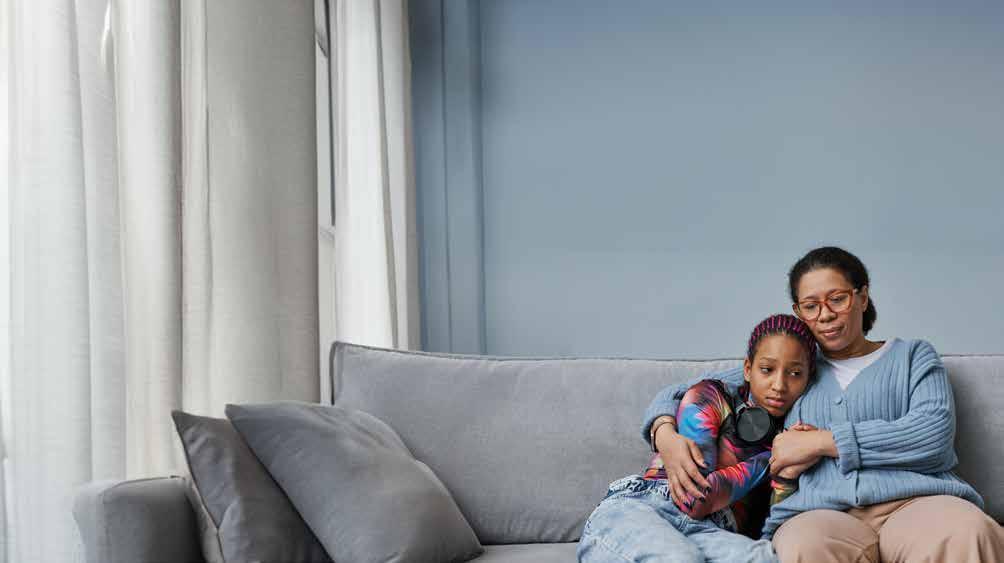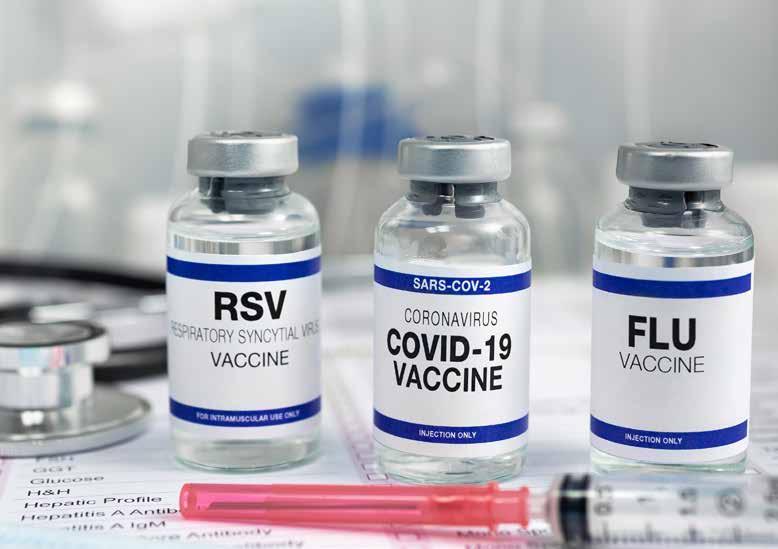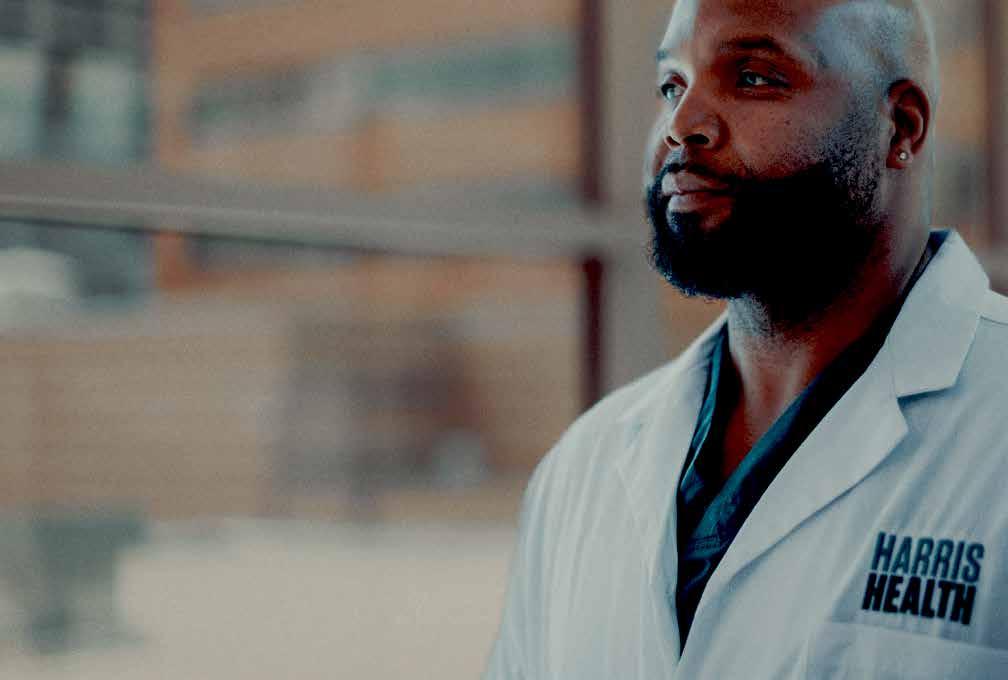










By Andre ‘M. Johnson NNPA Newswire Contributor
ccording to a recent study published in Lucent, the number of people living with diabetes worldwide is on pace to more than double in the next three decades. This increase will bring the total of worldwide diabetic patients to a staggering 1.3 billion by 2025, making diabetes one of the top 10 leading causes of death and disability, in the world.
AOn Dec. 5, 2017, a little-known drug hit the market to help millions of people suffering with diabetes. The drug was called Ozempic. Ozempic was created to lower blood sugar by stimulating the pancreas to produce more insulin and has shown continual success in patients with lowering their A1-C. The introduction of medications such as Ozempic and Wegovy has changed the game for millions of people worldwide who have been struggling with diabetes. It was a once weekly auto injector that would allow patients to maintain their sugar levels and create a healthier way of life. One of its known side effects, however, was dramatic weight loss.
In early 2022, Ozempic rose to fame when celebrities who do not suffer from diabetes began publicizing the drugs’ ability to assist in fast-acting weight loss. It quickly went from a lifesaving medication for diabetics to the celebrity go-to for shedding unwanted pounds. In 2021, in the U.S. alone, prescriptions of the drug quadrupled landing the miracle drug on the worldwide shortage list creating rippling effects through many communities.
Valentine Paterson of Brooklyn, New York thought he had found a solution to his endless battle with obesity and diabetes when he was prescribed Ozempic. The effects were almost immediate and life-altering.
“I weighed more than 365 pounds and after being hospitalized for heart failure, my doctor recommended I take Ozempic,” said Paterson a 52-year-old Uber driver. “Within four months of taking the drug, I lost 65 pounds, and my doctor reduced my other medications from nine to four. It changed my life. But then I could not get my prescription filled. I looked for months; it was a nightmare. All the work and progress I was making was slipping away, all because I was unable to pay out of pocket.”
The reason Mr. Paterson could not get his prescription filled is because Mr. Paterson’s local pharmacy, like many others
nationwide, was no longer able to obtain the blockbuster medication. The craze of Ozempic and Wegovy created a nationwide shortage of medication by those willing to pay the exorbitant out-of-pocket costs getting first cracks at the available supply. So, while pharmacies in lower income neighborhoods could not stock their shelves, pharmacies on Manhattan’s Upper Eastside had a twelve-month supply of the miracle drug readily available to those able to pay $1,400 per prescription. Given this void, the question was raised as to whether anyone or anything could help.
Enter the compounding pharmacy. According to the FDA, compounding pharmacies are authorized to produce exact drugs in times of a national shortage. But what exactly is a compounding pharmacy? A compounding pharmacy makes and sells prescription medicines based on the specific formula provided to it by the FDA. When a medicine makes its way to the national shortage list, compounding pharmacies are authorized to make generic versions of those medications to assist all those in need. When a medicine is not on the national shortage list, compounding pharmacies are only authorized to make alternate forms of the prescribed drug. Ozempic has been on both the worldwide and U.S. shortage list since April of 2022. However, what happens when Big Pharma doesn’t want to let compounding pharmacies earn money they feel belongs to them even during a shortage?
“Lifeline Pharmacy” is a small compounding pharmacy run by Dr. Aisha Johnson in the heart of south Los Angeles. For years, this pharmacy has served as a beacon of hope, providing personalized care and essential medications to the predominantly Black and Latino residents. Among the most critical medications Dr. Johnson compounds is semaglutide, the active ingredient in Ozempic and Wegovy. According to the U.S. Department of Health and Human Services, Black adults are nearly twice as likely as white adults to develop type 2 diabetes. This racial disparity has been rising over the last 30 years creating a disproportionate need for these life altering medications in communities of color. Despite the FDA’s approval for compounding pharmacies to produce semaglutide, Novo Nordisk has targeted these providers in order to protect their profits and eliminate the competition.
In the Ward 8 area of Washington, D.C., a heavily populated community of Black and Latino residents, the drug remains in high demand with little to no supply. “There is definitely a monopoly on it by Big Pharma,” said Dr. Damon Ricks, Pharmacy Manager at SIP. “Small
Compounding Pharmacies are definitely within their rights and scope to create these drugs when the FDA declares a shortage.”
The impact of Big Pharma’s campaign is being felt in communities from Brooklyn, New York to Los Angeles. The misinformation spread by Novo Nordisk, stating that compounded versions of semagludies are unsafe and potentially life threating has created fear and uncertainty in those using compounded versions of the popular medication. Intensifying the problem, legislative proposals influenced by pharmaceutical lobbyists threatened to impose restrictions that would make it nearly impossible for small pharmacies to continue compounding semaglutide. For communities of color, this means losing a critical source of affordable and accessible medication.
“Big Pharma should not have a hold on these drugs. There needs to be a leveling of the playing field. I think having access to these drugs all across the board is needed. If a patient needs it for diabetes, then it should be made available to them. Prioritizing weight loss over diabetic patients is an injustice to our health care system,” said Ricks.
But Big Pharma continues to push for stricter regulations, claiming the need for patient safety. However, insufficient evidence exists to back up any of the claims made by Big Pharma. Compounding pharmacies must comply with existing rigorous standards to make any medication. They follow these standards in order to serve lower economic depressed communities of color. The popularity of these drugs has made it difficult for average Americans to afford or find these medications. These are not just weight loss medications; they are tools for survival for many diabetic patients. Due to Big Pharma’s bullying campaign, many patients have been forced to accept lower doses of these drugs to maintain any benefits even though most experience little to no progress with the reduced dosage. Yet those that truly need these lifesaving medications continue to suffer.
For communities of color, the ability of local compounding pharmacies to provide semaglutide and other essential medications is about more than access to treatment. They serve as a testament to the power of community and the relentless pursuit of a more just and equitable healthcare system.
Source: NNPA Newswire

hair removal gained popularity fast due to the results obtained when using it. This laser features a crystal used in lasers of solid state and has a wavelength of 1064 nm, known as a safer wavelength for dark skin hair removal.
hen laser hair removal first appeared, it was recommended that people of color not engage in this treatment, thus it could leave their skin damaged with blisters, severe burns, discoloration, and the list goes on.
Laser hair removal works by distinguishing skin pigment from hair follicles, which is why many aestheticians recommend it for people with pale skin and dark hair than for people with similar coloration in both. Thankfully, laser hair removal for dark skin made incredible advances over the past few years, leading to the procedure being safer and more effective for people of color.
Which Is the Best Laser for Dark Skin Hair Removal?
You might be wondering about the reason behind laser evolution, and this has to do with the type of laser used in hair removal procedures. YAG laser for dark skin
To make the most out of your laser hair removal appointment, there are a few things you can do to prepare and look after your skin. First, it is recommended that you schedule a consultation appointment first so an aesthetician can take a look at your skin and determine whether it is safe for you to get laser hair removal or not. This is especially for people with acne or burns. Plus, you’ll need to discuss if you’re taking any medication or applying any skincare products that might affect the results or your skin after the procedure. Avoid tanning or waxing days close to your appointment, as well as exfoliating. The only thing you can and should do to your skin is shaving the areas you’ll get laser hair removal 24 hours before your appointment. Use a common razor for this and try to do it slowly to not get razor bumps.
Laser hair removal for dark skin is now safe and effective, but that also depends on the laser used by the salon and the experience of the esthetician. It is very easy to fall for cheap prices and then end up with a bad result that could damage your skin. Therefore, we recommend you take time to evaluate where you want to make an appointment, the equipment they use, the certifications of the place, and the people who work there.
Her Down There is a women’s health clinic run by specialized practitioners. Our goal is to provide affordable, fast, easy, and convenient healthcare for women in all areas they need. For laser hair removal for dark skin, we use the latest technology and equipment, including the YAG laser. Review our dark skin hair removal services and schedule an appointment.
Letrice Mason, MSN, APRN, FNP-C, is an accomplished women’s health nurse practitioner and proud owner of the esteemed Her Down There Women’s Clinic. She is a trusted healthcare professional within the Houston community.
By
Life can be complicated and unpredictable. And while there is no such thing as a “perfect parent,” there are strategies that can help your child become better able to deal with difficult circumstances as they arise.
Known in the pediatric community as adverse childhood experiences, traumatic circumstances like death, divorce and poverty cause children stress, which, over time, can become toxic, impacting a child’s health now, and potentially in the future. In fact, adults who’ve experienced one or more adverse experiences as a child or who are exposed to ongoing chronic social inequities over time are at higher risk of depression, cancer, heart disease, diabetes and other health conditions during their lifetime.
On the other hand, safe, stable, and nurturing relationships can act as a powerful, protective buffer against the biological harms of toxic stress on children and are key to building resilience, according to the American Academy of Pediatrics (AAP). When children feel connected and supported in the early years, says a newly updated AAP report, they are more likely to become healthy, competent and educated citizens later in life.

After troubling events, the AAP says to remember the 3 Rs: reassure, return to routine and regulate:
1. Reassure. Remind your child that they are safe and loved, using words and touch and by creating safe spaces in the home.
2. Return to routine. Try to maintain regular daily routines and be sure to explain any changes in the schedule ahead of time. This can promote a sense of safety and normalcy for your child and let them know what to expect.
3. Regulate. Help your child learn “self-regulation” skills to calm themselves and manage their emotions and behaviors. This may include belly breathing, stretching or taking breaks.
Experts recommend turning to your pediatrician when parenthood gets challenging. Pediatricians are trained to not only monitor your child’s physical growth, but also their social-emotional health. They can help your family build a support system-- whether a child is relatively healthy, has ongoing developmental or behavioral concerns, or if your family is going through hard times.
Pediatricians also want to know how parents and household members are doing and if they feel supported. At appointments, your pediatrician may invite you to share stories about your family life and the daily
stresses and struggles of parenting, as well as ask about your own childhood experiences and current living circumstances. So, bring your questions and concerns. The American Academy of Pediatrics provides tips and guidance on improving relational health, and helping children build resilience and cope with trauma. To learn more, visit healthychildren.org.
Source: StatePoint
By d-mars.com News Provider
re you prepared for the fall and winter seasons? As the cooler seasons approach, the threat of respiratory illnesses like influenza (the flu), respiratory syncytial virus (RSV), and COVID-19 becomes bigger. With overlapping symptoms and potential complications, it’s important to understand the importance of vaccinations in protecting your health. The Houston Health Department (HHD) provides essential guidance on how to protect yourself and your loved ones as the colder months ensue.
Flu: Influenza mutates rapidly, making it necessary for annual updates to the flu vaccine to match the most common circulating strains. According to the CDC, there are two main types of flu viruses: A and B. The influenza A and B viruses that routinely spread in people (human influenza viruses) are responsible for seasonal flu epidemics each year. The flu can lead to serious complications, especially in the elderly, pregnant women, and those with chronic illnesses.
RSV: RSV is a common respiratory virus that infects the lungs but can also affect the nose and throat. It spreads in the fall and winter, along with other respiratory viruses, like flu and COVID-19. According to the CDC, it usually peaks in December and January. While it often causes mild symptoms similar to the common cold, it can lead to severe bronchiolitis and pneumonia in vulnerable populations. RSV symptoms make it difficult to distinguish it from the common cold or other respiratory viruses (like the flu or COVID-19). Most people who get RSV will only have mild illness, but it can be very dangerous for babies, young children, and adults 60 and older.

COVID-19: Despite the decline in cases and severity due to widespread vaccination, COVID-19 remains a concern for many, especially with the emergence of new variants. People with COVID-19 may experience respiratory symptoms that feel like a cold, the flu, or pneumonia. Most people with COVID-19 have mild symptoms, but some are at a higher risk of developing severe disease and may require hospitalization. COVID-19 is spread primarily through contact with droplets made by people who are sick when they cough, sneeze, or talk. In some cases, a person might get COVID-19 by touching a surface or object that has the SARS-CoV-2 virus on it and then transferring the virus to their mouth, nose, or eyes, the CDC advises. Annual boosters like the flu shot are now recommended to maintain immunity, particularly for high-risk individuals.
According to HHD experts, vaccination remains the most effective defense against these viruses, helping reduce the severity of illness and preventing hospitalizations. The CDC recommends that everyone aged six months and older should receive an annual flu vaccine. This year, the flu vaccine is designed to combat the most common strains that are expected to circulate.

For COVID-19, up to date with the virus still vaccinated is those at higher underlying health
“We often forget vaccines were hospitalized we have been and health prevention illness and death,” important for communities they need. We consequences to vaccines.”
CDC’S RECOMMENDATIONS THIS FALL 1. Flu Vaccine: months and older Early vaccination build immunity lations are available, adults, which
“ Vaccines are an important us from vaccine-preventable this time of year, influenza RSV and COVID-19 are widespread, mune system with safe and layer of protection, ” Houston Health Department’s Authority, Dr. Janeana White,
COVID-19, the CDC continues to urge people to stay with their vaccines, including booster shots. With circulating and new variants emerging, staying crucial in reducing severe illness, especially for higher risk, such as older adults and individuals with health conditions.

forget what communities had to deal with before were available. Many people, young and old, were and more deaths occurred as well. Over time, been able to include vaccines in routine health care prevention strategies, which have helped reduce death,” Dr. White said. “This time of year, it’s for healthcare providers to ensure that patients and have access to vaccinations and the resources We don’t want to see people to suffer unintended consequences by not being vaccinated, or by not having access
Vaccine: The CDC recommends that babies six older receive their flu shot by the end of October. vaccination is important as it allows your body time to immunity before flu activity peaks. Different formuavailable, including high-dose vaccines for older which provide extra protection.
important instrument in our toolbox to protect vaccine-preventable infections and diseases. During influenza and other respiratory illnesses like widespread, so we must boost our imand effective vaccines to add another
Department’s Deputy Public Health White, says.
2. COVID-19 Vaccination: The CDC advises staying up to date with COVID-19 vaccinations, including any updated booster shots that target the most recent variants. As the virus continues to evolve, getting the latest booster can provide enhanced protection against severe outcomes.
3. RSV Vaccine: For the first time, the CDC recommends RSV vaccination for adults 60 years and older, particularly those with chronic medical conditions. The vaccine can help reduce the risk of severe illness and complications from RSV.
4. Co-Administration of Vaccines: According to the CDC, it’s safe to receive the flu, COVID-19, and RSV vaccines simultaneously. This co-administration can simplify the process and ensure that you are protected against multiple viruses at once, especially important for those with busy schedules or limited access to health care.
Consult Your Healthcare Provider: Before receiving any vaccines, talk to your healthcare provider, especially if you have underlying health conditions or concerns about vaccine interactions.
Practice Good Hygiene: In addition to vaccinations, maintain good hygiene practices such as regular handwashing, wearing masks in crowded places, and staying home when you’re feeling unwell to reduce the spread of any respiratory viruses.
Stay Informed: Keep up to date with CDC guidelines and HHD recommendations, as they may change based on the latest scientific evidence and virus activity. Consulting with your healthcare provider will help ensure that you receive the most appropriate vaccines for your age, health status, and lifestyle. HHD regularly updates guidelines based on the latest research and emerging virus strains.
“Remember, during respiratory viral season, if you’re feeling sick, it’s important to stay away from others at work, school, or home and consult your healthcare provider. It’s important to remember certain medications are available to shorten the course of your illness,” Dr. White advised.
As we look forward to navigating the colder months, vaccinations offer a shield of protection against the flu, RSV, and COVID-19. By following health experts’ recommendations and taking proactive steps to safeguard your health, you can significantly reduce your risk of contracting these severe illnesses and contribute to a healthier community. Remember, the best defense is a well-prepared one—so arm yourself with the necessary vaccines and stay vigilant, by any means necessary!

Sources: Houston Health Department, Centers for Disease Control and Prevention FOR A LIST OF


By d-mars.com

arris Health has been named to Forbes' list of America's Best Employers for Women 2024. The prestigious recognition is presented by Forbes and Statista Inc., the leading statistics portal and industry ranking provider, a news release said. The award list was announced on Tuesday, July 23, 2024, and can be viewed on the Forbes website. “Harris Health is among few organizations where half of its C-level executives and all but one of its nine-member board are women," said Harris Health President and CEO Esmaeil Porsa, MD. “Additionally, with a 74% female workforce, Harris Health is proud of the opportunities it provides women in the workplace to not only succeed but thrive in their careers."
America's Best Employers for Women were identified in an independent survey from a vast sample of over 150,000 women working for companies employing at least 1,000 people within the U.S. from all industry sectors. Over 4 million employer evaluations are considered. The result is based on the following three evaluations:
PERSONAL EVALUATIONS: Respondents were presented with a battery of statements about their current employer, in terms of topics related to Atmosphere & Development, Diversity, Image, Salary/Wage, Workplace, and Working Conditions, as well as topics women are often confronted with in the workplace: Representation & Career, Pay Equity, Discrimination, Flexibility, Family Support, and Parental Leave.
PUBLIC EVALUATIONS: Women participants were given the chance to evaluate other employers in their respective industries, or the employers of friends, acquaintances, and family members that stand out either positively or negatively.
DIVERSITY AMONG TOP EXECUTIVES/BOARD: Index based on the percentage of women among top executives and board directors.
Source: Harris Health System




continues to grow not just in student population but also in the construction of new buildings such as the John M. O’ Quinn Law Building and Tilman J Fertitta Family College of Medicine.
UH’s facilities growth includes the continuous need to procure a variety of non-construction goods and services, all of which undergirds UH’s recognition as an institutional “Powerhouse.”


